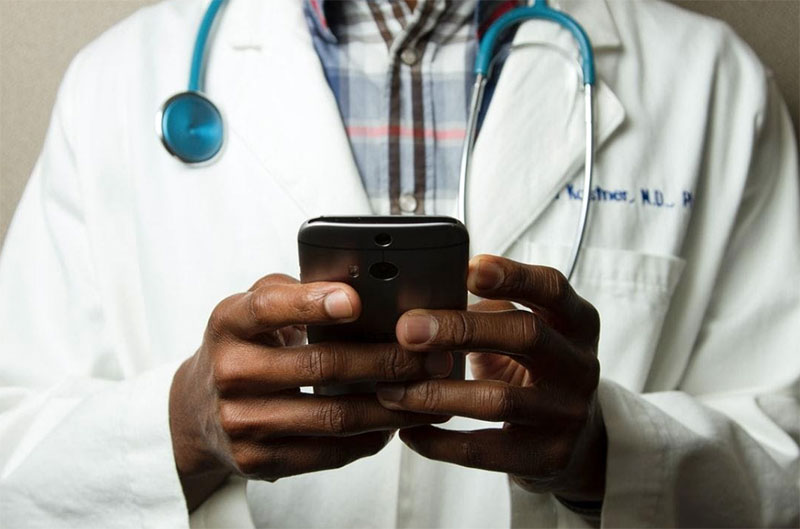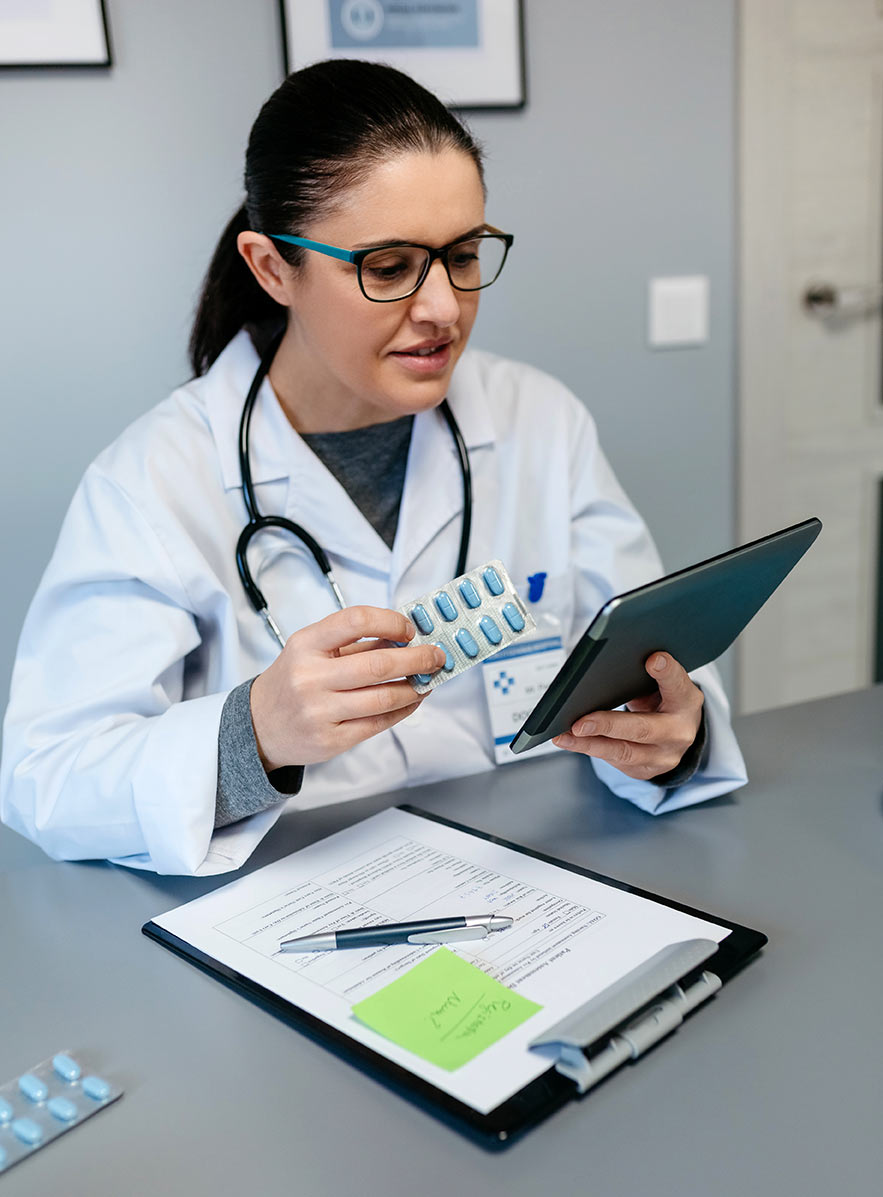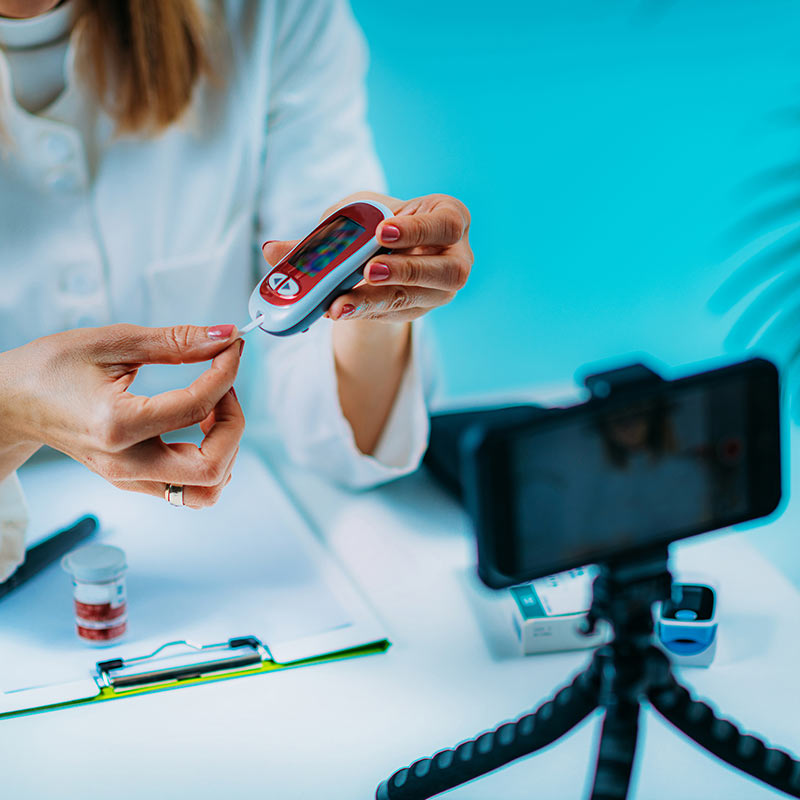The Future of Remote Patient Monitoring
Now that cloud technology is on the rise in the medical industry, clinics are taking advantage of one of the latest advancements to gain a foothold in mainstream healthcare services:remote patient monitoring.
While you’ve likely heard of telehealth, virtual health, remote patient monitoring, remote healthcare, etc., are you aware of just how important it has become in our modern healthcare system? In this article, let’s explore why remote monitoring is the key to modern healthcare, and what exciting role it will likely play in the future.

Why Remote Patient Monitoring is Thriving
At the beginning of 2020, remote patient monitoring (RPM) adoption was still struggling to enter popular awareness. It was new, seemingly complicated, and many providers simply weren’t aware of just what it could accomplish for their practice.
But once the COVID-19 pandemic hit, it served as an alarming wake-up call. Medical professionals everywhere realized that RPM technology was the answer to continuing patient care safely, adhering to CDC best practices.
Even after the time for social distancing passes, it’s becoming increasingly clear that RPM is here to stay as a normal, necessary, and much easier part of our modern healthcare system. It can help reach underserved populations while reducing the overall cost of care, maximizing convenience for both patients and physicians.
RPM’s Exciting Future
The benefits of having a remote patient monitoring system integrated with your practice are endless, but where is this technology headed? Here’s what healthcare professionals can expect as virtual healthcare becomes the new normal.

Drastic increase in RPM and Virtual Healthcare Adoption
Chronic conditions are often preventable or even reversible in the early stages, and remote patient monitoring is making this more of a reality for patients around the world. The outlook is so promising, in fact, that the RPM market is expected to double in the next five years.
Providers everywhere are realizing that they can help more people if they can expand how they serve patients without being face-to-face — whether in person or via video chat services. One 2019 study conducted by the Consumer Technology Association (CTA) indicated that 68% of physicians strongly intended to use RPM going forward. That study was before the pandemic, which persuaded the remaining physicians to adopt a virtual care platform.
Go Mobile or Go Home
Everything is going mobile now, and has been for some time. RPM is no different. Patients and providers alike rely increasingly on having that constant access to information, and with remote patient monitoring mobile apps, that’s already possible for healthcare.
But the future looks to be going even more mobile with mRPM models on the rise. More and more tech companies are developing or improving upon RPM mobile apps, which have a much higher chance of keeping patients engaged with their own healthcare.
This in turn saves the provider and healthcare staff valuable time, as the patient can easily understand the status of their health plan or chronic care management, reducing the need for visits and questions.
With some conditions such as heart disease, stroke, or diabetes, the earlier a provider can help the patient get it under control, the more efficient that patient’s healthcare services will be. That translates to increased revenue for the practice as it enables providers to care for more patients without compromising the quality of care. This can also prevent costly and life-threatening emergency room visits and hospital admissions for patients.
Remote patient monitoring technology developers know that the better their mobile app performs, the more conditions that can be effectively managed with the app, and the more virtual health devices that can be connected with the mobile app, the more revenue and better care a provider can give.
The future is mobile.
With Great Power Comes More Regulation
Remote patient monitoring became a no-brainer solution during the pandemic. There was no other way for many providers to serve their patients. Given the crisis, the Centers for Medicare and Medicaid made some changes to accommodate the new, immediate needs of the population.
Still, many remote health monitoring systems are in the early adoption phases, and CMS has been somewhat slow in implementing permanent reimbursement reform.
With their proposed 2021 Medicare Physician Fee Schedule (PFS), CMS granted some provisions for RPM services for both new and existing patients. Some of these provisions appear to be permanent, however, others are intended to revert to previously established policies following the end of the Public Health Emergency (PHE).
This, in addition to the decisions in favor of telehealth over the last few years, shows that the regulating bodies recognize the advantages associated with telehealth and remote patient monitoring services. Making these and other changes permanent mean that more patients would have access to the technological advancements that are already available.
Such access would, in turn, enable greater research and development of more advanced technology, allowing remote patient monitoring vendors like CoachCare to continue to improve the standard of care.
With that improvement, and increased usage, will likely come even more changes and regulations as the regulatory entities begin to understand the implications of RPM. Compliance already is, and will continue to be, a very important element of providing remote patient monitoring to your patients.
Even More Eco-Friendly
Without getting too mathematical, here’s the situation: more patients utilizing remote patient monitoring devices equals a reduction in waste from doctor visits, reduced emissions from driving, reduced amount of people flowing in and out of the same building, etc. It naturally impacts the environment in a positive way. How much may depend on how well RPM technology continues to grow with this consideration in mind.
Eco-friendliness is more of a cause/effect situation attached to the adoption of RPM, but it also influences what the future of this technology could look like as more and more RPM platform developers consider the eco-friendly implications of their technology.
Artificial Intelligence is Taking Over the World, and RPM
There have been so many conversations surrounding AI, along with a slew of films that have led us to think it will steal our jobs, enslave our consciousness, or unleash terminators to exterminate our species.
But that’s just movies. AI is actually a very exciting technology that has the potential to greatly support the healthcare industry as a whole. In many ways, it already is.
If AI can better connect providers with the information they need to help a patient with a chronic condition, many lives will not only be saved, but the quality of life will improve. In the case of complex conditions that require a variety of specialized clinicians to properly care for the patient, artificial intelligence can automate the communication and information passed between the multiple care providers as well as the patient’s family.
Add RPM to the mix and providers can work together, with the database of knowledge collected in the platform, automatically synced by the AI technology, to help patients get the instant, personalized care they need right from their homes.
This technology grows more sophisticated by the day, and is expected to play a larger and more integral part of virtual healthcare moving forward.
RPM Reimbursements & Growth
While the benefits of remote patient monitoring platforms are clear, and the future is looking bright and exciting, the immediate future includes a few things you should know about.

CMS has shown their growing support for RPM in the past two years by adding a second time monitoring code (99458) to support up to 60 minutes of patient monitoring per month, while maintaining robust reimbursement rates. They have also emphasized the broad applicability of RPM by clarifying that the service can be used for both chronic and acute conditions. Lastly, CMS has made delivery of RPM more flexible by enabling RPM to be delivered under general supervision, which enables clinicians to delegate monitoring to their staff even outside the office.
The best way for our healthcare system to experience a meaningful impact from these recent policy changes is for providers to standardize the adoption of RPM. The question is which RPM tool is right for your practice.
At CoachCare, we can get your remote patient monitoring system implemented in as little as two weeks, at which point you can begin billing these new CPT codes with the support and guidance of our RPM experts.